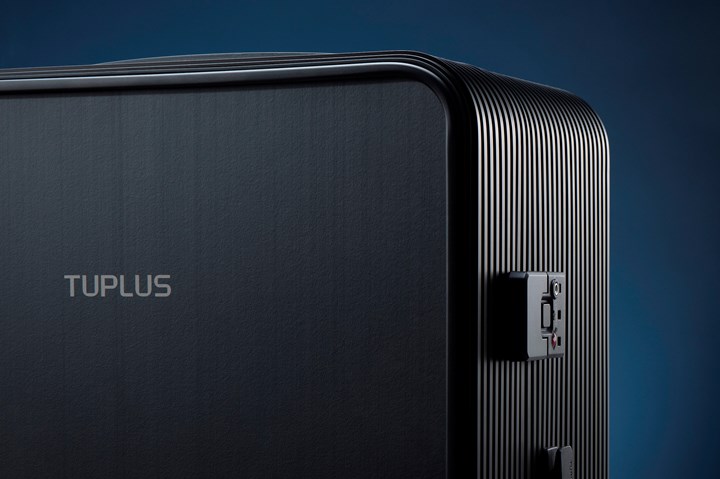Tuplus introduces carbon fiber-reinforced polycarbonate suitcase
The highly durable suitcase, featuring front and back shells made with Covestro’s Maezio polycarbonate composite, was designed for low-cost production, high-volume production.

Source | Covestro
High-end Chinese luggage brand Tuplus has released a new carbon fiber suitcase under its “Core” lineup. The 25-inch model, currently only available for sale in China, features an aluminum and magnesium alloy structural frame, and front and back shells made of Maezio polycarbonate-based composites from Covestro (Shanghai, China).
Tuplus says composites use increases the suitcase’s sturdiness during natural wear and tear, while also elevating design and style. Tuplus has performed safety tests on the suitcase, including drop and tumble tests and falling ball impact tests, noting improved impact resistance compared to conventional aluminum suitcase shells. Further, the carbon fiber is unidirectional, for aesthetic and design simplicity.
Despite the dramatic decrease in travel due to the coronavirus pandemic, Tuplus believes the travel industry will bounce back as travel restrictions are eased globally. “People haven’t changed in that they still want to travel, but we need to adapt to the new times ahead and to the new needs of tourists to feel safer,” says Catherine Jiang, president and CEO of Tuplus. “High-quality materials are always at the heart of our design concept because we know our customers rely on them for travel safety and security.”
Tuplus notes that, while carbon fiber luggage tends to be hand-crafted, thus driving up cost and making it difficult to scale, the use of Covestro’s Maezio thermoplastics allows fabrication to be done with thermoforming, which increases efficiency and yield rates and reduces cycle times. Further, the company says the design of its front and back shell structures allow composite sheets to be integrated directly into the production line and assembled after cutting and coating, thereby maximizing throughput.
“We believe our thermoplastic composite solutions will accelerate the adoption of carbon fiber composites in luggage,” says Lisa Ketelsen, head of Covestro’s thermoplastic composites business. “Meanwhile, we’re also working on thermoformed, 3D luggage cover solutions to make composites available for a wide range of suitcases.”
Related Content
-
Plant tour: Aernnova Composites, Toledo and Illescas, Spain
RTM and ATL/AFP high-rate production sites feature this composites and engineering leader’s continued push for excellence and innovation for future airframes.
-
Prepreg compression molding supports higher-rate propeller manufacturing
To meet increasing UAV market demands, Mejzlik Propellers has added a higher-rate compression molding line to its custom CFRP propeller capabilities.
-
Ceramic matrix composites: Faster, cheaper, higher temperature
New players proliferate, increasing CMC materials and manufacturing capacity, novel processes and automation to meet demand for higher part volumes and performance.
















